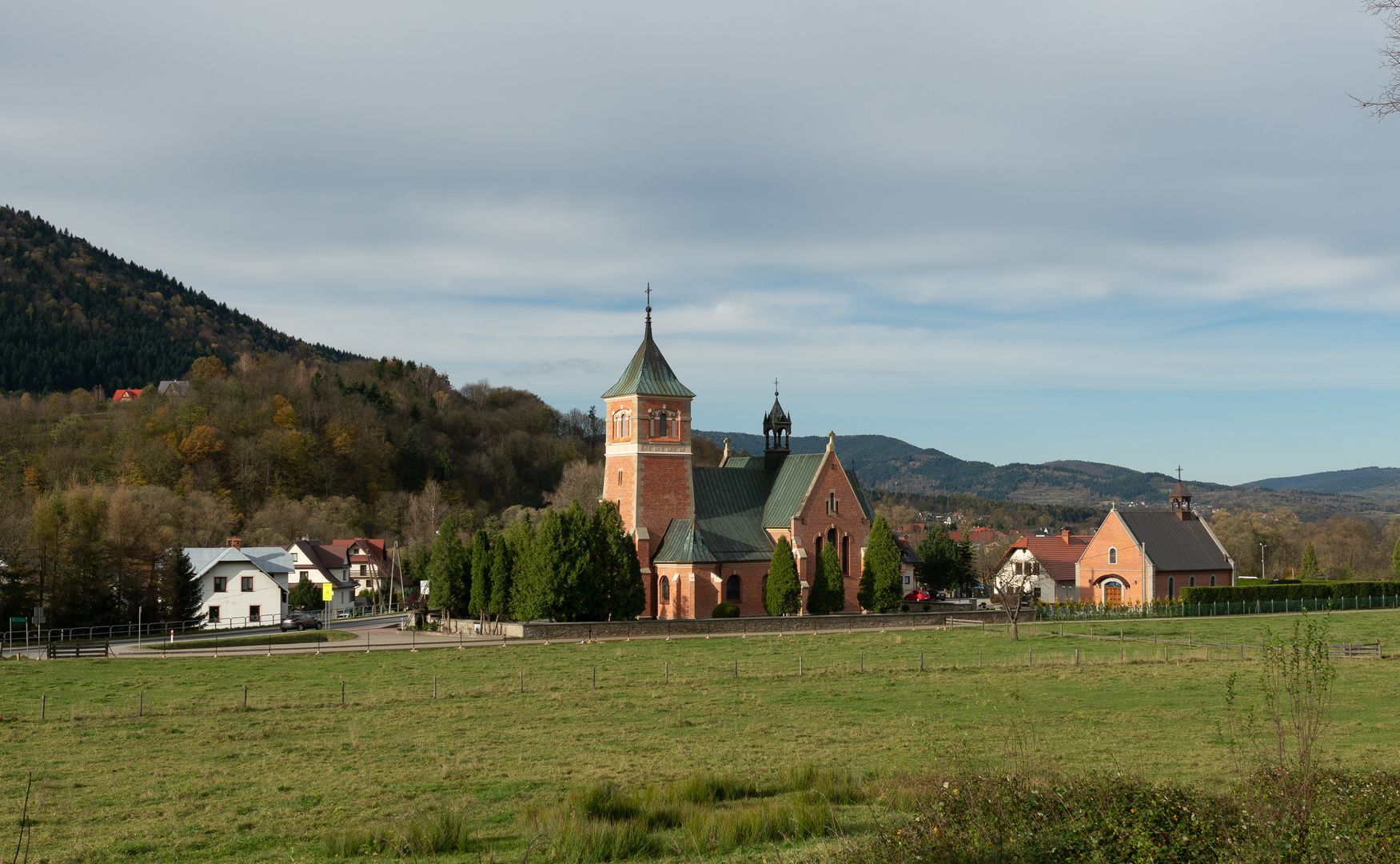Kasinka Mała
6.05

Overview
Kasinka Mała is a village located in the Lesser Poland Voivodeship, in the Limanowa County, known for its rich history dating back to 1360, when it was owned by the Cistercian Order. The first mention of the village comes from 1448, when it was known as the settlement of Ogonówka. Kasinka Mała was the site of numerous peasant uprisings, including an anti-feudal movement between 1649 and 1654, and a peasant strike in 1937, during which nine protesters lost their lives. These events left a lasting mark on the village's history, as evidenced by the unveiling of a commemorative plaque in 1967 and the village being awarded the Knight's Cross of the Order of Polonia Restituta in 1987.
Architecturally, Kasinka Mała features a brick Church of the Visitation of the Blessed Virgin Mary from 1913, with a Baroque-Neogothic altar and 18th-century statues. Additionally, a unique tourist attraction is the 19th-century chapel with an image of Our Lady of Częstochowa and a shrine with a sculpture depicting the third fall of Christ. On Mount Lubogoszcz, there is a YMCA recreational and leisure center, which attracts tourists. Kasinka Mała also serves as a base for mountain hiking enthusiasts, with a black tourist trail leading through key points of the Beskid Wyspowy range.
The village is home to the sports club "LKS Zenit Kasinka Mała," founded in 1974, which currently competes in the A-class league. Furthermore, Kasinka Mała has been immortalized in literature, such as in Leopold von Sacher-Masoch's "Die Seelenfängerin" and Jan Józef Szczepański's "Portki Odysa." The Parish of the Visitation of the Blessed Virgin Mary operates in the village, highlighting the importance of religion in the local community's life.
Inhabited mainly by Zagórzanie highlanders, Kasinka Mała combines rich cultural, architectural, and sporting heritage, creating a unique mosaic of tradition and modernity.
Location
You can also find here:
2025 Wizytor | All Rights Reserved
